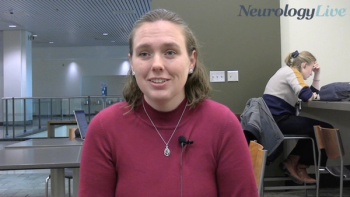
Structured Lifestyle Program Leads to Greater Cognitive Improvements in At-Risk Individuals Over Self-Guided Intervention
Key Takeaways
- The U.S. POINTER study showed structured lifestyle interventions significantly improve cognition in at-risk older adults compared to self-guided interventions.
- Funded by a $50 million investment, the study involved 2111 participants and demonstrated significant improvements in global cognitive scores and executive function.
New research revealed that structured lifestyle programs could significantly enhance cognitive function in older adults at risk of decline, outperforming self-guided interventions.
Newly presented 2-year data from the U.S. POINTER study showed that both structured (STR) lifestyle program and self-guided (SG) intervention improve cognition in older adults at risk of cognitive decline, respectively; however, greater benefits were seen through the STR intervention. This was the first large-scale, randomized controlled trial to showcase that an accessible and sustainable healthy lifestyle intervention can protect cognitive function across a range of diverse background in the United States.
Fueled by a $50 million investment from the Alzheimer’s Association (AA), U.S. POINTER is a phase 3, 5-site, 2-year, single-blind randomized trial testing STR and SG interventions in older adults at risk for dementia. Presented at the Alzheimer’s Association International Conference (AAIC), held July 27-30 in Toronto, Canada, investigators reported statistically significant changes in Global cognitive composite scores, the primary outcome, in both groups at 2 years, with a statistically significantly greater benefit observed in the STR group vs SG: 0.029 SD per year (95% CI, 0.008-0.050; P = .0008).
Across 2111 participants enrolled, retention was high, with 89% completing the 2-year final assessment. On secondary outcomes, investigators reported a greater increase in executive function z-scores among those in STR than SG, by 0.037 SD per year (95% CI, 0.010-0.064). Processing speed showed a similar, though not statistically significant, trend, and no group differences were observed in memory.
"The potential to improve cognition with fewer resources and lower participant burden is compelling. It highlights that while not everyone has the same access or ability to adhere to more intensive behavior interventions, even modest changes may protect the brain," principal investigator Laura D. Baker, PhD, professor of gerontology and geriatrics, and internal medicine at Wake Forest University School of Medicine, said in a statement.
In the study, both interventions focused on physical exercise, nutrition, cognitive challenge and social engagement, and health heart monitoring, but differed in intensity, structure, accountability, and support provided. The STR intervention involved 38 guided peer meetings over 2 years, with set goals for physical activity, MIND diet adherence, cognitive training, and regular clinician check-ins. In contrast, the SG group attended only 6 meetings, receiving general support to make lifestyle changes at their own pace without specific coaching or targets.
Coming into the study, the mean age of the cohort was 68.2 years, with 78% of patients reporting a first-degree family history of memory loss. Nearly one-third of the trial featured those from ethnoracial minority groups, and 30% of the cohort were APOE-e4 carriers, considered at higher risk for late-life neurodegenerative disorder.
U.S. POINTER is still ongoing, and will continued to be powered over the coming years by a $40 million investment from the AA. In the near future, the organization plans to launch several programs and initiatives, including: a personal brain health assessment tool, a virtual brain health training program for healthcare providers, and a community recognition program for organizations championing brain health.
Prior to POINTER, the 2-year FINGER trial (NCT01041989), published in 2015, also tested a multidomain approach to prevent cognitive decline in at-risk elderly people. That study, assigned 1260 patients aged 60-77 years with CAIDE scores of at least 6 to either a 2-year intervention (n = 631) of diet, exercise, cognitive training, and vascular risk monitoring or control (n = 629). The primary outcome was change in cognition as measured through comprehensive neuropsychological test battery (NTB) z-score.2
Similar to POINTER, data from FINGER revealed that a multidomain intervention could improve or maintain cognitive functioning in at-risk elderly people from the general population. Overall, investigators recorded an estimated mean change of 0.20 (SE, 0.02; SD, 0.51) in NTB total z-score for the intervention group at 2 years vs changes of 0.16 (SE, 0.01; SD, 0.51) in the control group. The between-group difference in change of NTB total score per year was 0.022 (95% CI, 0.002-0.042), which was statistically significant (P = .030).
At the 2024 Clinical Trials on Alzheimer's Disease (CTAD) conference, Susan Landau, PhD, presented data comparing MRI and PET findings from the POINTER study and a matched ADNI cohort. While both groups had similar rates of amyloid positivity (31%), hippocampal volume, and white matter hyperintensities, tau prediction models revealed lower tau levels in POINTER participants—especially among amyloid-positive individuals (P < .001). Notably, amyloid and tau were not associated with PACC scores in POINTER, diverging from trends seen in more homogenous cohorts.
REFERENCES
1. U.S. POINTER STUDY SHOWS STRUCTURED LIFESTYLE PROGRAM TARGETING MULTIPLE RISK FACTORS IMPROVES COGNITION IN OLDER ADULTS AT RISK OF COGNITIVE DECLINE. News release. Alzheimer’s Association. July 28, 2025. Accessed July 28, 2025.
2. Ngandu T, Lehtisalo J, Solomon A, et al. A 2 year multidomain intervention of diet, exercise, cognitive training, and vascular risk monitoring versus control to prevent cognitive decline in at-risk elderly people (FINGER): a randomised controlled trial. Lancet Neurol. 2015;385(9984):2255-2263. doi:10.1016/S0140-6736(15)60461-5
Newsletter
Keep your finger on the pulse of neurology—subscribe to NeurologyLive for expert interviews, new data, and breakthrough treatment updates.




















